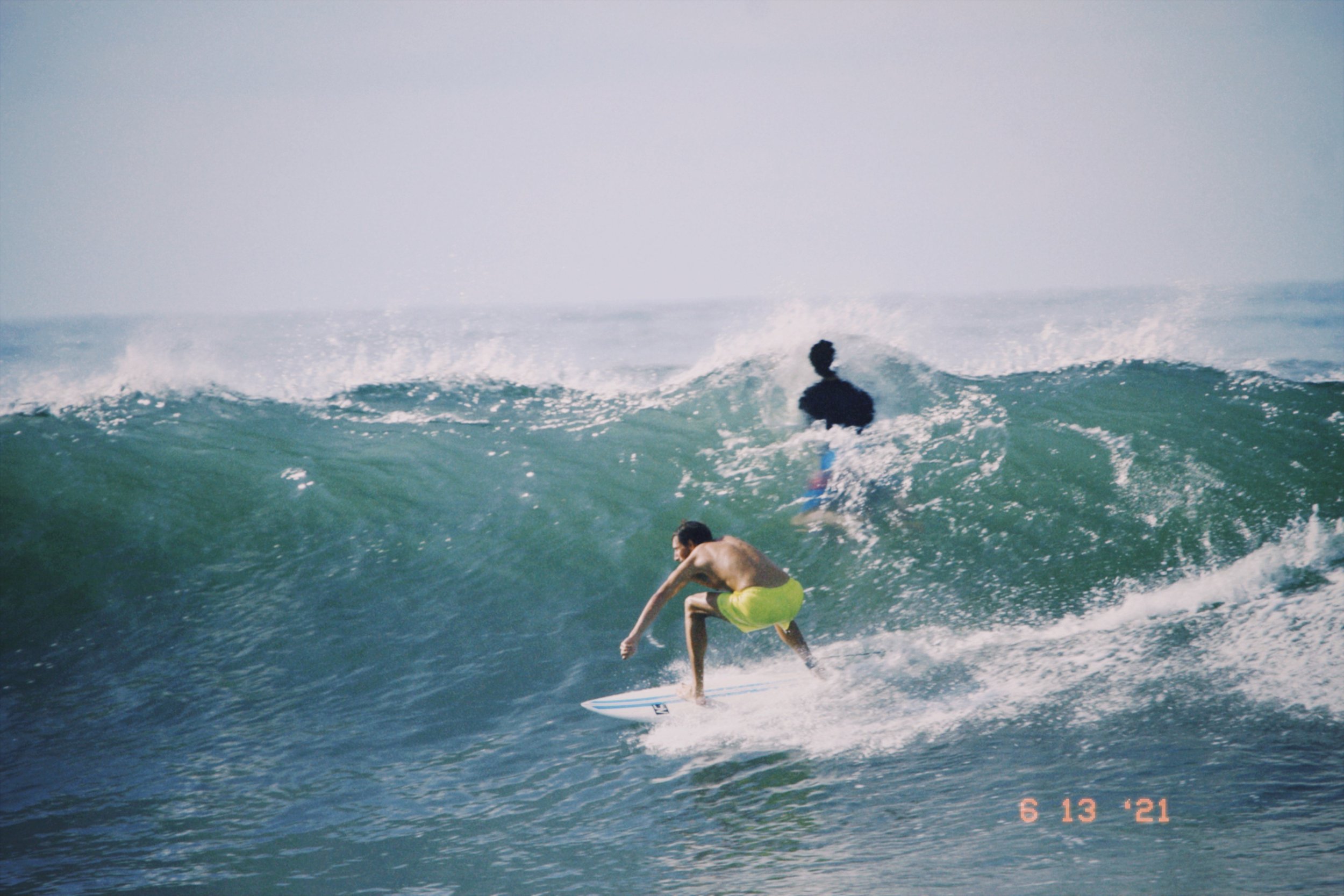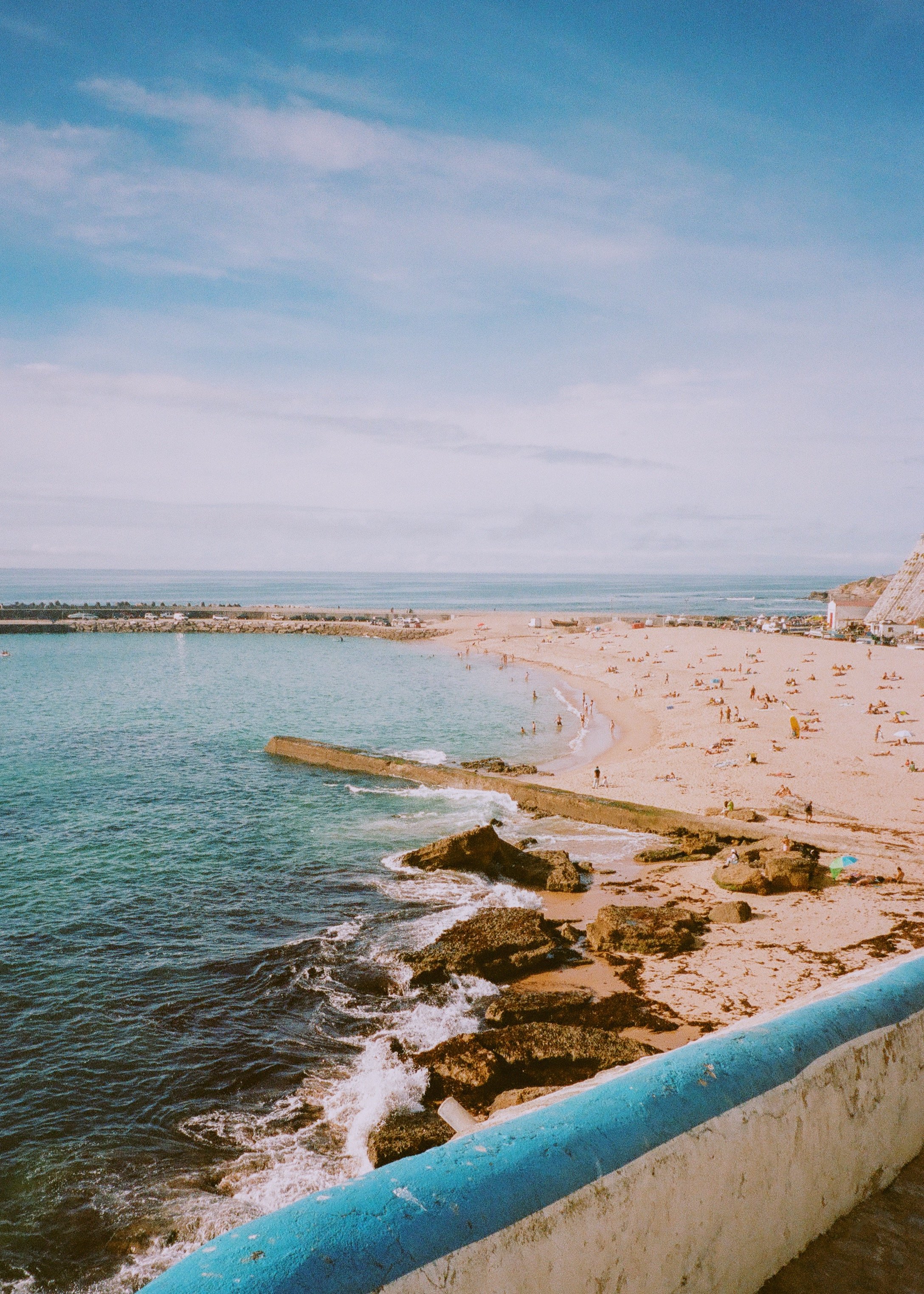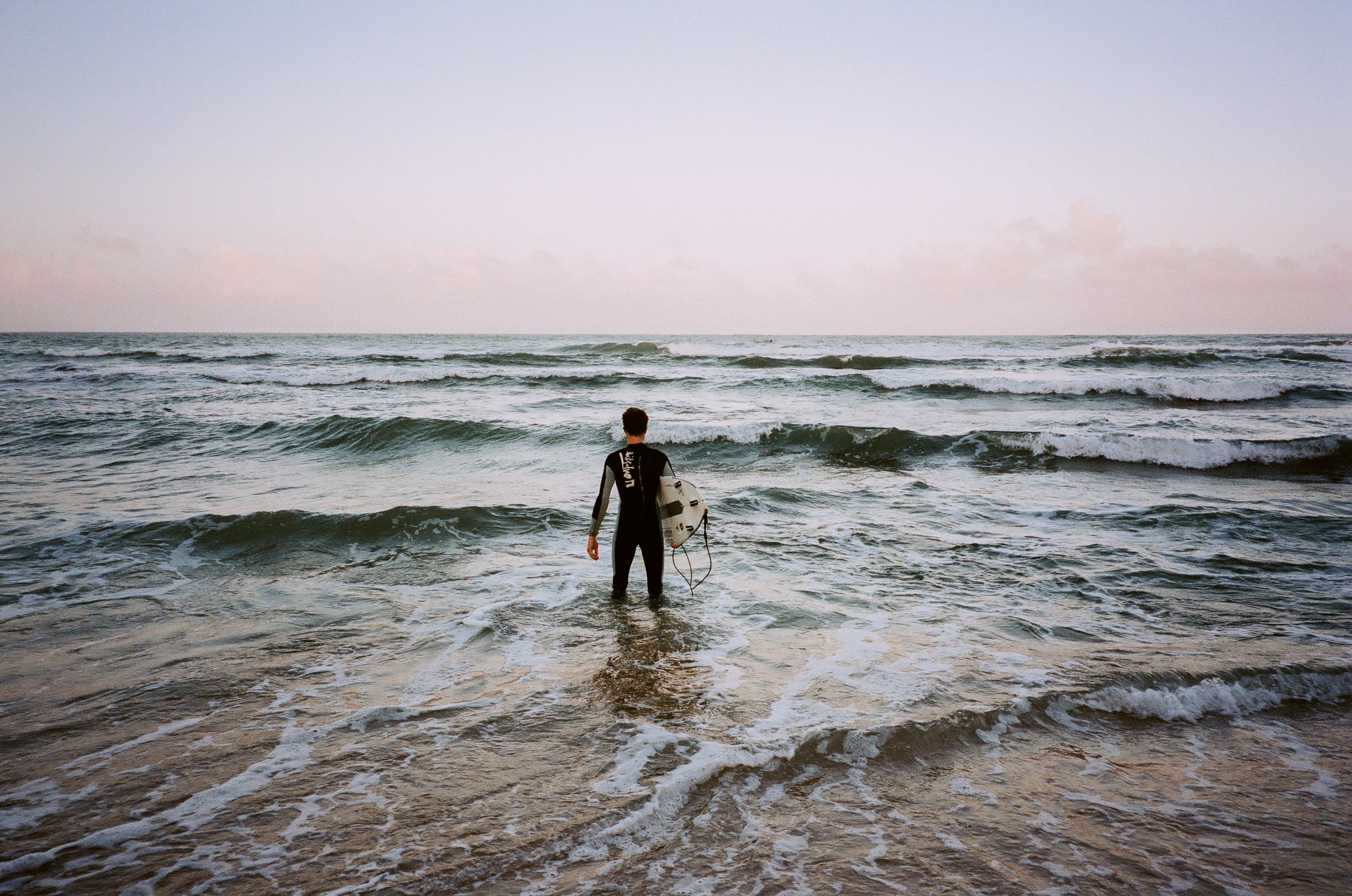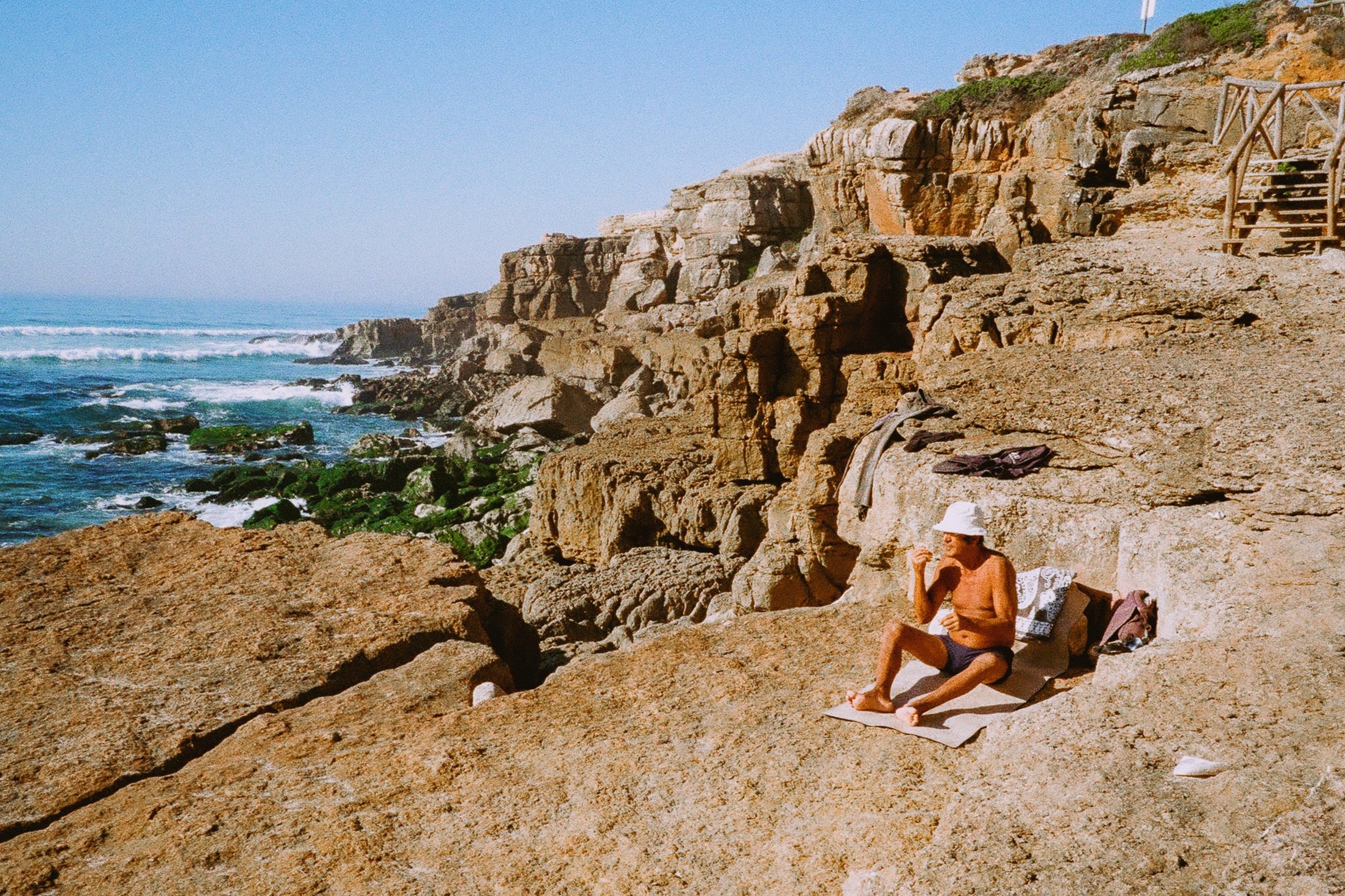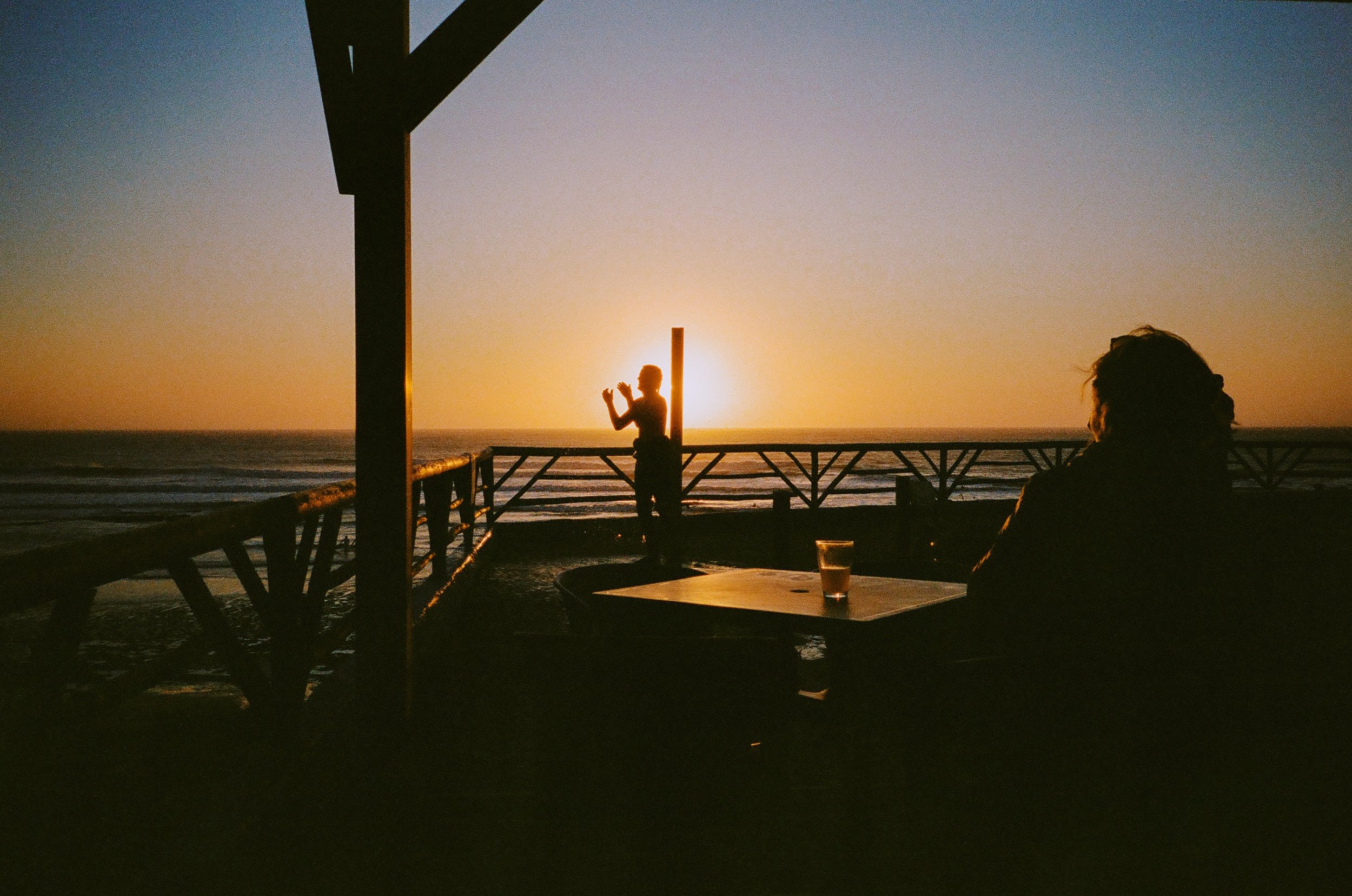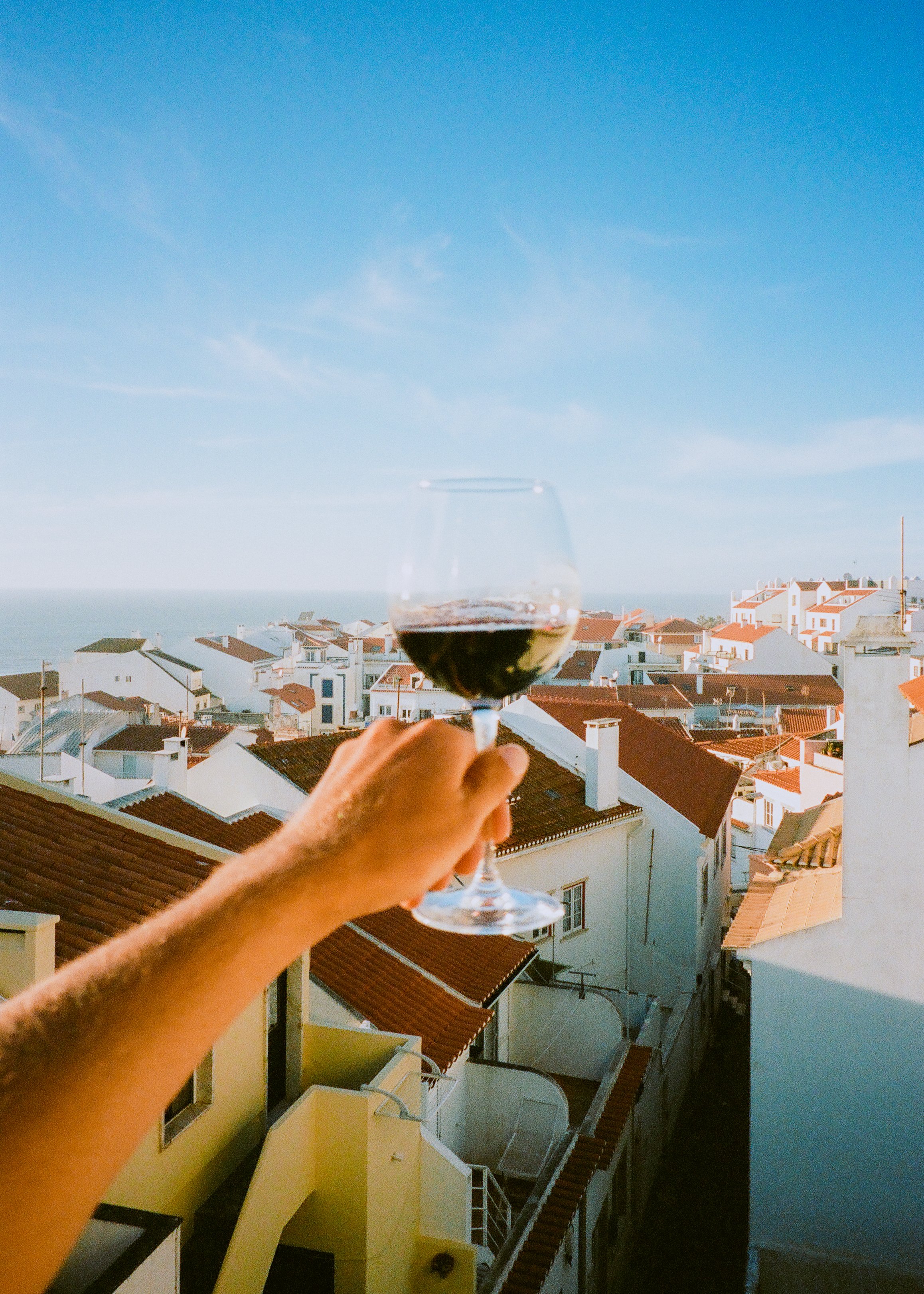Caleb Thill On Picking Up New Hobbies In Adulthood
WITH CALEB THILL
You’ll know you’ve found “the one” — your new hobby, that is — when you completely lose track of time in the process and intuitively find humor in failure.
Photography, Caleb Thill
Words, Brandon Scott Roye In Conversation with Caleb Thill
VIEW GALLERY
Catching up with recreational surfer and photographer, Caleb Thill, I couldn’t help but notice a flurry of long-untapped childhood memories swirling through my head throughout the rest of the day.
Most of them, from the elementary school playground. The one where I punched a kid during recess because he called me “gay” before either of us knew what that word meant — and before I knew that he was, in fact, correct.
In hindsight, it was so easy to be present and connected with nature as a child.
Digging and polishing colorful rocks from the dirt, tasting the nectar from honeysuckle flowers on the fence next to the neighboring farm, chasing frogs and running from geese by the pond, and eating as much Big League Chew bubblegum as humanly possible during little league baseball games. The latter of which was a bigger flex than hitting a homerun.
Through quite a bit of unlearning, I realized that I can do something for fun without the expectation of being good at it.
As you peruse my relaxed conversation with Caleb about organically-exploring and intentionally-committing to new hobbies in adulthood, I encourage you to brush off the cobwebs from your own highlight reel of the early years. Give yourself the space to truly meditate on the funny little things which made you smile during that magical, slo-mo time in your life.
The squeaky swings on the school playground, the tattered basketball hoop in the driveway, floating noodles at the public swimming pool, waiting for the school bus to round the corner with your cumbersome backpack and violin. And let’s not forget that random thing you were remarkably good at in the third grade which you completely forgot about, until right now.
You’ll know you’ve found “the one” — your new hobby, that is — when you completely lose track of time in the process and intuitively find humor in failure. That meditative flow, rooted in a joyful detachment from success, is one of life’s greatest gifts.
BO: When was the moment you realized you were developing a passion for surfing? Did you arrive at surfing through trial-and-error or was it more organic?
CT: I grew up in the water. My family lived in Hawaii for two years when I was 11 to 13 years old, so I was always around the ocean. And for context, my dad was a pastor traveling around the country to consult churches to get their feet on the ground.
When we moved away from Hawaii to Kansas City, I started swimming competitively because my parents said I’m basically a fish and haven’t even taken swimming lessons yet. After a few years, I started to take swimming pretty seriously for state and maybe even the Olympics.
When my brother turned 18, his connection with the ocean led him to Costa Rica. I’d say he’s the crazier one moving there at such a young age to learn how to surf.
After Hawaii, we lived in Kansas City and all we could think about was moving back to the ocean. Distance makes the heart grow fonder.
I was always enamored by the lifestyle and aesthetic of surfing, but I always thought it was too late for me to start surfing — and be good at it. Through quite a bit of unlearning, I realized that I can do something for fun without the expectation of being good at it. And that’s the moment when I really dug in to start learning the sport.
BO: How have those learnings and unlearnings surfaced in other areas of your life?
CT: The western mindset of, “I have to be good at it and make money, otherwise it’s not worth it” is no longer how I choose to live. It doesn’t have to be super impressive and profitable.
If you love it and it helps you be present in the moment, that’s all there is to it. It doesn’t have to be a sport like swimming. It could even be knitting. Anything you find joy in. You don’t need to win. And of course, now that I’m a year and a half into surfing, I’m starting to feel competitive like my swimming days back in Kansas City.
Life isn’t linear, it’s all over the place. There isn’t one path with one destination. I was a competitive swimmer while I was studying at a conservatory to be a professional violinist. Then, I realized I wanted something different, so I taught myself how to code and got a job in tech. And along the way, I’ve always taken images documenting my life, sharing through social media, and now photography prints.
Each experience was a stepping stone for where I am today.
The western mindset of, “I have to be good at it and make money, otherwise it’s not worth it” is no longer how I choose to live.
BO: Tell me about your first day and first hour surfing.
CT: I was at Rockaway Beach in October, so it was very cold. I’m such a water guy and love new challenges, so I was excited to jump on a surfboard for the first time.
One of the first things I knew to expect is that ocean sports are much different than others in that there’s not a level playing field. There are so many variables to take in like the sun, wind, and waves. It’s equally exciting and scary, but I just wanted to have fun.
I didn’t come in with the expectation of, “I’m a great swimmer, so I’ll be a great surfer”. I had water awareness, but it’s much more than that.
Jump in and give it your best shot.
BO: How do you mentally tackle jumping into cold water, especially early in the morning?
CT: Well to begin with, surfing in El Salvador, Portugal, and even New York is very different. The beaches within one city — and even the seasons within one beach — vary drastically which makes it both exciting and challenging. You never have the same day twice.
In high school, swimming practice was at 5AM, so it feels very innate at this point. And it’s funny you ask about the cold water for surfing. I always wear a wetsuit and it’s much warmer than you’d expect.
My friends always say, “you’re so epic, you’re so brave for surfing in the winter”, and I’m always thinking, “thanks for thinking that, but it’s not like I’m jumping in with a regular swimsuit”. Modern technology is really impressive and I’m actually quite cozy.
The hardest part is really just taking off your wetsuit when you’re tired, more so than jumping in.
BO: What is your surfing cadence in the water? How many hours and how many breaks in terms of intensity?
CT: If I’m doing a winter session and it’s snowing, two hours is my max before my face starts feeling numb. When the waves are perfect and I’m in El Salvador, I’ll be out there between four and five hours.
When the waves are bigger, you’ll want to stay out in the water longer with less breaks. If you surf back in, you’re likely done for the day. Swimming with your board out to the break where the waves are crashing, it’s quite the workout. You can only swim back and forth so many times, based on endurance.
BO: How do you know what’s going on around you in the ocean?
CT: Water awareness and ocean awareness is incredibly important. I’m still learning and even those who have surfed their entire lives are still learning.
Reading the ocean means you’re constantly evaluating, “Where are the waves crashing? Where do the sets come in? Are there rocks underneath the water? Where do I jump in and jump out without wasting energy?” and much more.
Surfing can be an aggressive sport. There’s a chill lifestyle, but people are known to fight over the waves.
BO: Let’s talk food and beverage on the beach — for performance and lounging.
CT: I’m ravenous when I’m surfing and my pants are still falling down. I’d have a pizza, a few tacos, a burger, and I was still starving. Realistically, it’s good to be lean with your diet.
Every time I get out of the water, I want a cold beer. A good pilsner, IPA — it’s so refreshing. And I’m not much of a beer drinker elsewhere. It’s just when I surf.
And maybe a spicy mezcal margarita.
BO: What kind of people have you met surfing? What are the up to when they’re not on the beach?
CT: It depends so much on the surf town you’re in.
Surfing can be an aggressive sport. There’s a chill lifestyle, but people are known to fight over the waves. Sometimes there’s hostility in the water.
And there are rules to follow. There’s a lineup and everyone waits for their turn. If you don’t respect the locals, it can turn into yelling, cursing, fighting, and even being kicked out of the water. When you’re learning to surf, it’s much more welcoming. Especially at beginner breaks. Once you start branching out — as long as you know the rules, respect the locals, you’ll be fine.
Where I learned in El Salvador was incredibly welcoming. Up until recently, there weren’t many women in surfing. And speaking to the LGBTQIA+ community, there are two professional surfers who are lesbian that I know of. I don’t know of any openly gay male surfers which is pretty crazy.
In El Salvador, there are just as many women as men in the water. Especially wives of professional surfers who realized they can keep up and have fun together in the water. It’s epic to watch them in the water.
The dynamics are changing which is great to see.
BO: I’ve noticed the bike is a staple, no matter where you are in the world.
CT: I love exploring by bike both in New York and when I’m traveling. It’s faster than walking and slower than driving. You notice so much more detail and can truly feel present.
BO: Why have you anchored to New York?
CT: The phrase I’ve stuck to recently is, “city boy always looking for the next adventure”.
I’ve thought about this a lot. I love the speed, the energy, the go-go-go of New York. At the same time, I also love nature, the ocean, and adventure.
Why can’t we have both? We’re multi-faceted human beings. Our parents' and grandparents' generation chose what they wanted to do in college, picked a hobby, and stuck to it for life.
A lot of people are now realizing that “home” doesn’t need to just be one spot. Ideally, I’ll always be based in New York and traveling five to six month of the year to different countries and projects.
I love the city and at the same time, I also love this small town called El Zonte in El Salvador where there’s only three streets, one of the streets is the beach, everything is so slow and simple. The town revolves around the ocean and sunset. People ask you, “Hey, what are you doing at sunset tonight?”
You go to bed at 8:30PM and wake up at 5AM to surf.
I’ve learned there’s no perfect destination. When I was in El Salvador for the winter, I became a bit sad that I was missing the seasons change and the first snow in New York. I wasn’t complaining because I was on the beach, but I knew next year I wanted to experience fall and early winter in New York next year, and then escape before January weather hits. It’s about structuring my life in a way that I have “homes” around the world, even if they’re just temporary.
BO: Tell me about your photography prints. You take thousands and thousands of images. How did you get it down to 10-20 images for your first two collections?
CT: For a while, people thought, “Caleb is an influencer”. This year, I also want to be identified as a “photographer”.
It’s amazing that someone can have something tangible in their apartment which I created for them. It wasn’t about finding another revenue stream. I just choose the images which feel special to me and invite friends and followers the opportunity to experience those moments along with me through photography prints.
The first collection studied human-water connection. There were multiple bodies of water featured like oceans, rivers, and waterfalls. I’m really happy with how it turned out. The second was through followers asking for specific images as prints after my trip to Portugal. My film work is more landscapes and documentary style where there’s a human element without focusing on their identity. Whereas, for social media I’m shooting images with myself as the subject.
I’m now blending “photographer” with “influencer” projects through social media which has been rewarding.

